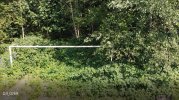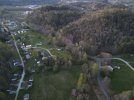I have been flying for about 3 months and have noticed several threads of taking off and flying into buildings and trees. Seems to me like a lot of the problem is altitude, the easiest problem to correct. Just the latest one of taking off, going a cross the road and hitting a tree. Every time altitude is the first thing I do after taking off and checking out the movement of the drone. Take off and at least hit the 300 mark before flying.
You are using an out of date browser. It may not display this or other websites correctly.
You should upgrade or use an alternative browser.
You should upgrade or use an alternative browser.
Two most important things in flying, altitude and....altitude
- Thread starter wardtom084
- Start date
Saladshooter
Well-Known Member
I agree to a point. My friend is a novice flyer and always wants to fly low because he is scared to fly at height. I always argue that the place to be nervous is down low where there are plenty of buildings and trees to collide with.I have been flying for about 3 months and have noticed several threads of taking off and flying into buildings and trees. Seems to me like a lot of the problem is altitude, the easiest problem to correct. Just the latest one of taking off, going a cross the road and hitting a tree. Every time altitude is the first thing I do after taking off and checking out the movement of the drone. Take off and at least hit the 300 mark before flying.
300ft is quite high though and means a few things.... you have to deal with a lot more wind, you have to burn more battery to get up there and get back and the subjects you are trying to record are smaller. To combat having to put the drone up so high, survey your surroundings, if nothing reaches more than 150ft and your terrain is relatively level or drops away from you then there is no reason to put your bird up so high unless you are trying to get specific shots from that distance.
Set the return to home height and fly at a reasonable height above the tallest objects. Adjust with the situation and avoid using blanket settings.
Interesting observation, I fly lower as I am more interested "point targets". But you need to very aware of the surroundings in all directions. As well to maintain visual flight rules I am often in a narrow flight lane in the Pacific Northwest.
There is a disused soccer goal I been using a training target, the flight footage is boring but I am slowly moving further away to practice judging distance.
It is really about patience and practice


Part of my aim to have the drone up when my local Land R over club does this kind of trail. A drone at the far bend up at 3/4's of tree height would have achieved some excellent footage. But it is very close in so you need to be precise.

There is a disused soccer goal I been using a training target, the flight footage is boring but I am slowly moving further away to practice judging distance.
It is really about patience and practice


Part of my aim to have the drone up when my local Land R over club does this kind of trail. A drone at the far bend up at 3/4's of tree height would have achieved some excellent footage. But it is very close in so you need to be precise.

StantonZ
Well-Known Member
Totally agree....if nothing reaches more than 150ft and your terrain is relatively level or drops away from you then there is no reason to put your bird up so high unless you are trying to get specific shots from that distance.
I am usually at 400 feet or higher. Living in the mountains of N.C. just to my west, probably two tents of a mile, I have a hill that is over 300 feet high, and one to the south probably 1/4 mile is one even higher. I have no problems flying and have noticed nothing in the way of higher winds. I even fly at night some 3k feet out. I am very familiar with where I am at. No buildings and no backing into trees for me.
Attachments
JackL
Well-Known Member
Fly over the ocean and you will never hit anything. 
300' is pretty high. I rarely get up there unless I am insanely far away and having signal issues.
300' is pretty high. I rarely get up there unless I am insanely far away and having signal issues.
MarkusAtHome
Well-Known Member
Since building and flying my own drones in the early 90’s I have learned that high altitude video footage is somewhat boring, and everybody can do it. Exiting scenes are taken from lower altitudes. However, this requires experience and thorough planning.
Aerialskape
Well-Known Member
Flying above hazards is definitely safer. Get to a height you feel is above nearby objects then do 360 rotation to ensure it’s clear. Once confidence increases then start the lower flights.
I’m currently doing flight for NT garden near me which involves flying through gaps in trees and up inside some of them, still nerve wracking but gets easier with each flight.
I’m currently doing flight for NT garden near me which involves flying through gaps in trees and up inside some of them, still nerve wracking but gets easier with each flight.
andyj
Active Member
When discussing altitude the following video covers it well.
Also everyone needs to take the Trust test.
Constantly flying at 300' makes for some very boring and repetitive imagery. Sure there are times for that. Even over that.
But the vast majority of the time it's way below 300'.
Instead of relying strictly on AGL, concentrate on situational awareness. There are some cool and exciting opportunities to fly low. Even ground level. And close to things.
300' is safe (usually), but also boring.
Case in point:
But the vast majority of the time it's way below 300'.
Instead of relying strictly on AGL, concentrate on situational awareness. There are some cool and exciting opportunities to fly low. Even ground level. And close to things.
300' is safe (usually), but also boring.
Case in point:

A.O.
Well-Known Member
I rarely if ever get to 300 feet high, except, as someone mentioned, I'm losing signal. A lot of my flying is 5-6 feet off the ground.. I enjoy flying trails through the woods, so much more entertaining than just flying over the woods.
Bryce steiner
Well-Known Member
I would not agree with the 300 foot mark you have set for yourself. I cannot think of a single time I have gone that high, and I have been producing videos for several years at my usual altitude of less than 150 feet, and most of the time, 60-80 feet. Of course I fly in clear areas. Being closer to the ground gives my photography a great vantage point that I did not have before. Please refer to some of the videos I have produced at these heights at Dale Davis,M.D.I have been flying for about 3 months and have noticed several threads of taking off and flying into buildings and trees. Seems to me like a lot of the problem is altitude, the easiest problem to correct. Just the latest one of taking off, going a cross the road and hitting a tree. Every time altitude is the first thing I do after taking off and checking out the movement of the drone. Take off and at least hit the 300 mark before flying.
Dale
Miami
You can fly at 300 around here but I like to take it up the mountain. One day I plan on a run up one a couple of miles from the house. Ground level here is around 2k feet and a mile or so away you will be at 4,716 feet. If you keep it at 300 here you better stay in the valleys. Someone mentioned if they get it past 300 feet they start losing signal. Don't know why as you should be able to take it out a mile easy and not loose signal. I have been out over 4k feet and each time I go out, I go a little farther out.
Maviac
Well-Known Member
Agreed. I do enjoy flying up high because it’s interesting to get that vantage point, but rarely does anything above 300 feet result in a compelling or interesting photo or video. There are some exceptions - I did some shots and videos of a large city the other day, and needed to go to 350 to get both the historic area and the modern skyline in the same shot, and it worked out well - but for the most part the benefit of a drone is being able to get a “high but not too high” shot, a very different perspective than shooting from an airplane (which I also do, but results in a very different perspective. At 400 feet, you can’t see much, but the field of view is also usually less interesting than a sweeping landscape you could get from a plane at 2-3000 feet.)I would not agree with the 300 foot mark you have set for yourself. I cannot think of a single time I have gone that high, and I have been producing videos for several years at my usual altitude of less than 150 feet, and most of the time, 60-80 feet. Of course I fly in clear areas. Being closer to the ground gives my photography a great vantage point that I did not have before. Please refer to some of the videos I have produced at these heights at Dale Davis,M.D.
Dale
Miami
Maviac
Well-Known Member
That’s the “safe” approach but when I am trying to make a good video (as opposed to just something quick for fun) I usually do a preliminary flight and record all the obstacles then make sure my minimum altitudes for those areas are 20-30 feet above in those areas. Ideally I’ll do a litchi mission afterward if I have time, but it’s nice to know for sure that I’m going to be clear of anything based on my initial scouting flight. I have a notebook of minimum altitudes in the places I fly frequently (the caveat is that it’s only accurate if I take off from the same place every time, or at least a place of equal MSL altitude.)I have been flying for about 3 months and have noticed several threads of taking off and flying into buildings and trees. Seems to me like a lot of the problem is altitude, the easiest problem to correct. Just the latest one of taking off, going a cross the road and hitting a tree. Every time altitude is the first thing I do after taking off and checking out the movement of the drone. Take off and at least hit the 300 mark before flying.
itallica
Well-Known Member
Exactly - Photographers fly the height they need to get the best composition - totally different than trying to fly with the goal of taking all the risk out of running into things. If I understand the FAA perspective, prepare, plan, and execute in the safest way possible, with total situational awareness. I can sometimes be guilty of concentrating a bit too much on the shot and put my aircraft at risk not being a pilot.I would not agree with the 300 foot mark you have set for yourself. I cannot think of a single time I have gone that high, and I have been producing videos for several years at my usual altitude of less than 150 feet, and most of the time, 60-80 feet. Of course I fly in clear areas. Being closer to the ground gives my photography a great vantage point that I did not have before. Please refer to some of the videos I have produced at these heights at Dale Davis,M.D.
Dale
Miami
The only time I ran my motorcycle off the road was a day I let my mind wander - it was a beautiful day, a curvey road, and a lot on my mind. After some experience and education I now ride as if every vehicle is trying to kill me - constantly scanning the horizon for threats to myself and my passenger. This simple shift to awareness has saved my life many times.
tlswift58
Well-Known Member
Not always doable. If you have open spaces - sure getting above treeline - about 75-100 ft is preferred. Yet with my droning waterfalls - getting above tree level is not always doable.I have been flying for about 3 months and have noticed several threads of taking off and flying into buildings and trees. Seems to me like a lot of the problem is altitude, the easiest problem to correct. Just the latest one of taking off, going a cross the road and hitting a tree. Every time altitude is the first thing I do after taking off and checking out the movement of the drone. Take off and at least hit the 300 mark before flying.
Many factors result in flyaways. From my little experience - most of my issues happen when there is not enough GPS / sat's to lock in - so, you're flying by the seat of your pants in ATTI till that happens. Drift, winds, etc can play havoc in ATTI mode if you're paying close attention.
Also, when you read the posts from our great wizards of flight logs - most turn out to be "pilot induced / error." Yet, they claim they were doing nothing to make it happen. Flight logs don't lie - they simply state what the drone is doing. Not directly saying people are lying - it's that we're not cognizant of our actions some times and we may be pushing sticks when we're thinking we are not. My Air2's is real touchy and doesn't take much to send the drone off in a direction I don't want it to go. Many posts from great folks telling "HOW" to slow that down in settings - which is great, yet it's something each pilot has to play with to get it where they want it. Maybe investing in longer sticks as well - another great suggestion here in the forum.
And last - DJI is not your friend and if they can pin the mishap on you - guess who pays the bill?
tlswift58
Well-Known Member
Really - why some many crashes into the water then?Fly over the ocean and you will never hit anything.
300' is pretty high. I rarely get up there unless I am insanely far away and having signal issues.
hiflyer201
Well-Known Member
- Joined
- Sep 27, 2018
- Messages
- 2,740
- Reactions
- 2,167
Similar threads
- Replies
- 37
- Views
- 5K
- Replies
- 13
- Views
- 2K
- Replies
- 44
- Views
- 4K
- Replies
- 6
- Views
- 2K
- Replies
- 6
- Views
- 1K
DJI Drone Deals
New Threads
-
-
-
-
Selling Mini 4 Pro Fly More Combo, RC2 controller, 3 batteries, 8 ND Filters
- Started by Dale D
- Replies: 0
-
Members online
Total: 2,733 (members: 8, guests: 2,725)













